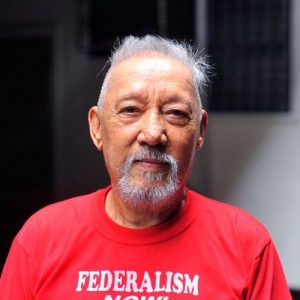“The Philippine Development Plan notes that housing has consistently received less than 0.5 percent of our government budget. In 2017, the National Housing Authority and the Social Housing Finance Corp. jointly received P13 billion, or 0.39 percent of the total P3.55 trillion budget. This is a mere “drop in the bucket” notes John J. Carroll Institute on Church and Social Issues at Ateneo de Manila University, given the 1.7 million households targeted for direct housing, needs.” (Cielito F. Habito, “Far behind in housing”, No free lunch, Philippine Daily Inquirer, September 6, 2019).
-oOo-
Per info, 6.2 million new housing units from 2012 to 2030 is our projected housing need. Three million of the 6.2 million are for socialized and subsidized housing group. Budget wise, we need about 50 billion yearly for 18 years for socialized and subsidized housing alone.
No wonder, our informal settler’s problems continue to grow with our meager housing budget annually. Clearly, it is time for our government to focus on housing for the poor in our Build, Build, Build infrastructure Program. “Hindi lang puro sa kabutihan ng mga maykaya na!”.
Let’s talk of housing for the poor in Davao region. Does our Regional Development Council (RDC) XI have any comprehensive and integrated socialized and subsidized housing plan for Region XI? My guess is NONE. If this is really the case, then RDC XI should immediately prepare one.
There is one big time infrastructure now being planned covering Digos City to Tagum City. This is the proposed modern railway system connecting these two cities. Per info” bidding for Mindanao railway system connecting these two cities. Per info “bidding for Mindanao railway is set this November.” May we humbly suggests to RDG XI to start preparing a Land Use Plan covering about a strip of two kilometers – (one kilometer on each side of the proposed railway tracks) indicating especially potential large areas for low-cost housing in said strip preferably adjacent to existing and proposed commercial and industrial areas therein.
After said Land Use Plan is approved, then we ask the affected local government units to adopt officially their respective Zoning Ordinances for official implementation of this Land Use Plan, in their particular area of responsibility.
When this first step is done, the second step is for the national and local governments to immediately acquire identified lands for low-cost housing through purchase or expropriation. WE may call this phase as “Low-cost Housing Land Banking” meaning advance acquisition of potential land for socialized and subsidized housing. Of course, those government acquired lands must be effectively secured by the government against squatters, professional or otherwise.
Now, for the government to further economize in housing for the poor, we must consider this very innovative low-cost housing scheme, which may be called “Planned Slum”. This project is very appropriate and exclusively for our poorest of the poor. “Planned Slums” must be situated closely (walking distance) to urban centers. Each LGU must have at least one “Planned Slum” in their area of concern.
Below is the step-by-step procedure of implementing “Planned Slum” Project: Step 1. Choose a sizable government acquired (preferably through expropriation) land for low-cost housing closest to existing urban center; Step 2. Plan this for extra low-cost housing with narrow graveled streets and alleys, open canals for drainage needed parks and playground small areas for “Talipapa” or marketplace, health and purok centers, and chapel, water system with fire hydrants and electrical lines. Each residential lot will be about 7 meters x 10 meters; Step 3. Provide each residential lot with a small concrete hollow block walls roofed toilet and small septic tank; Step 4. For the Department of Social Welfare and Development (DSWD) of each Local Government Unit (LGU) to properly determine the poorest of the poor of their registered residents to be qualified as beneficiaries of these “Planned Slum” residential lots (one for each household). DSWD must computerize all the names of the beneficiaries of this special housing project for future reference. Beneficiaries must build their own homes from whatever materials they can acquire as what they usually do when they squat on unoccupied lands. Their resourcefulness is imperative to avail of this special project.
We are happy to learn that “the Davao City government is being pushed to permanently move a total of P15,000 households located along rivers and waterways to safer grounds. It’s about time that our City Government does this for our poor residents. Well-to-do informal Settlers must avail of the NHA and PAG-IBIG housing programs while our poorest of the poor should be relocated in a “Planned Slum” city government project.
The Build, Build, Build massive infrastructure program of the Duterte Administration should include socialized housing for the poor such as building four-story tenement houses in our urban centers. Priority in these housing projects must be for the relocation of poor informal settlers occupying riverbanks, coastal areas, other dangerous places and sites identified for government projects. Our government officials must have the political will to expropriate some of the idle private urban lands for socialized housing of this nature. In-city resettlement for poor families is most advisable to minimize socio-economic dislocations.

